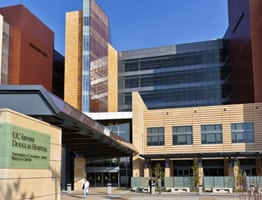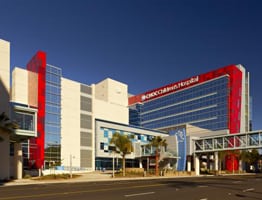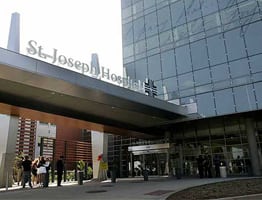
Surgical Spine Pain Options
Spine pain can go from being a minor inconvenience to a constant disruption to your daily life. If you’ve reached a point where pain medications, physical therapy exercises, modification of activities, chiropractic manipulations, and other non-surgical treatments no longer provide sufficient relief, you may benefit from laser spine surgery. Typically performed with minimally invasive surgical techniques, many laser spine treatments can be performed as outpatient procedures.
Laser Spine Surgery Procedures
Laser spine procedures can be performed to decompress nerves being irritated by protruding disc material, bone spurs, or conditions like spinal stenosis, an abnormal narrowing of the spinal canal. Some procedures are done to restore stability to the backbone.
Pain from a compressed nerve is often related to damage to a spinal disc. These discs provide cushioning between individual bones of the spine (vertebrae). One way to relieve nerve irritation is with a minimally invasive discectomy. During the procedure, the part of the disc that’s bulging or protruding outward onto a nerve root is removed.
Patients with nerve compression caused by a pinched nerve, bone spurs (osteophytes), herniated discs, or degeneration due to arthritis of the spine may experience relief after having a minimally invasive laminotomy procedure. A small bone on the back of a vertebra (lamina) is removed during this type of surgery to provide more space for nerves.
Anything that’s compressing a nerve in a narrow passageway that carries nerve roots to the other parts of the body (foramina) can be removed with a foraminotomy. It’s a procedure that may be recommended for patients with a narrowing of the spine affecting nerve roots in the foramina (foraminal stenosis).
Patients with facet joint arthritis may have chronic pain and limited mobility in the lower back or neck. A possible treatment is facet thermal ablation. During the procedure, a laser is used to target the arthritis in the spinal joints by creating a small incision in the affected part of the joint. The laser application deadens compressed nerves.
Conditions
Bulging discs, degenerative disc disease, sciatica, spinal stenosis, and pinched nerves are just some of the possible sources of back or neck pain or radiating nerve pain that may be treated with laser spine surgery. The techniques used can precisely target affected discs, tissues, and nerves in a way that’s not as disruptive to nearby muscles and other structures.
Laser spine surgery can be an elective procedure performed when patients aren’t experiencing the desired results with conservative treatments. Some patients also benefit from less invasive surgery with failed back surgery syndrome (FBSS), a term used to describe continued pain after back surgery. In some cases, the reason for FBSS is because a proper diagnosis wasn’t made before the first procedure.
With laser spine surgery, patients with FBSS may see better results with a minimally invasive procedure performed after a correct diagnosis has been made with tests that may include X-rays, MRI scans, CT scans, and nerve conduction studies. Symptoms that suggest previous attempts at back surgery have failed may include:
- Pain that’s the same as it was prior to surgery
- Discomfort felt above or below the surgical site
- Increased reliance on pain medications
- Appearance of different symptoms that are also chronic in nature
Preferred Candidates and Possible Benefits
Ideal candidates for laser spine surgery are otherwise healthy except for their back, neck, or nerve pain. As with any type of spine surgery, a specific source of spine pain has to be identified before lase spine surgery becomes an option. Patients often undergo a physical examination that includes a review of medical history and discussion of symptoms experienced. Minimally invasive spine surgery may also benefit patients having difficulty with daily activities due to persistent pain and those who have had open surgery to tried various non-surgical options without success. Patients opting for laser spine surgery frequently benefit from:
- Smaller incisions and no cutting of muscles
- An ability to return to normal activities within a few weeks for most common procedures
- Lower infection rates
- An ability to target specific problem areas with greater accuracy
- Less blood loss, which also means a reduced need for a transfusion or plasma replacement
Recovery from laser spine surgery is usually shorter than what’s typical with more invasive procedures. However, post-operative physical therapy can still be beneficial for most patients to restore full function of back-supporting muscles. Since surgical pain isn’t as severe, many patients are less dependent on medications normally prescribed after spine surgery. Being mindful of diet and exercise habits can also minimize the risk of experiencing spine-related pain in the future.









